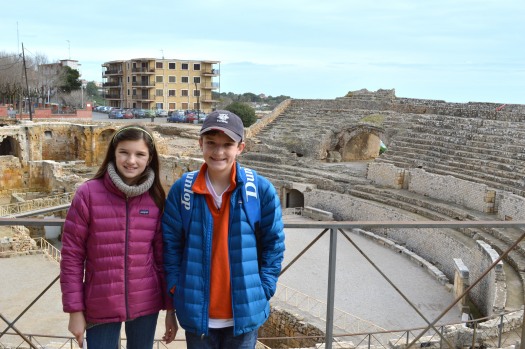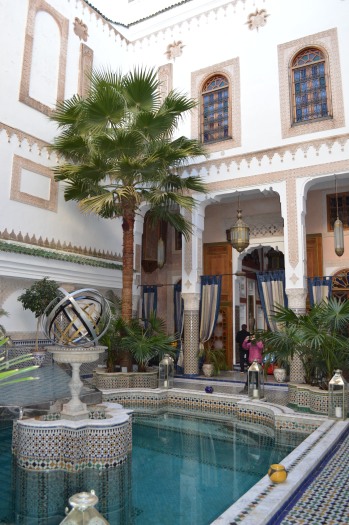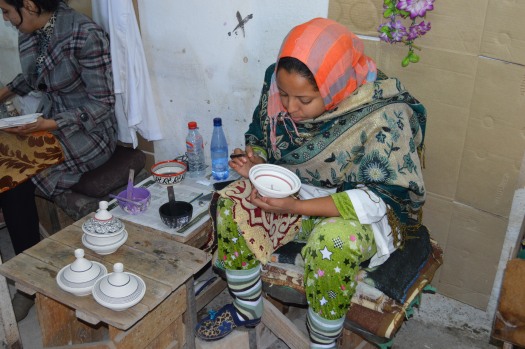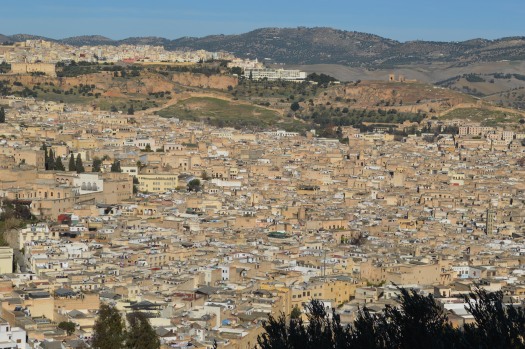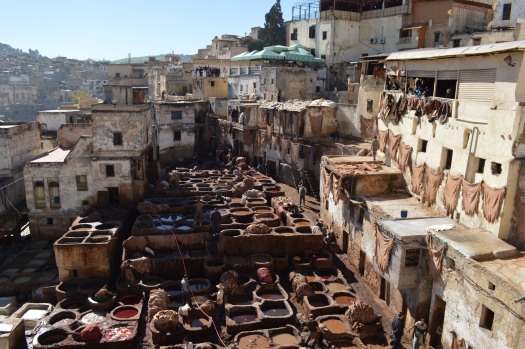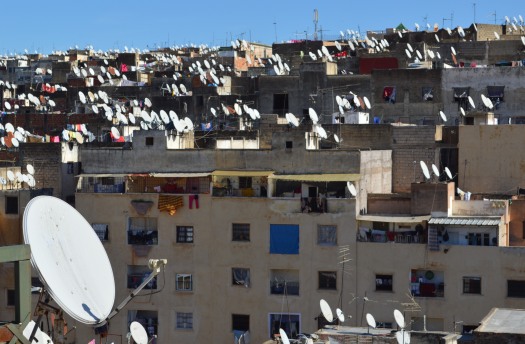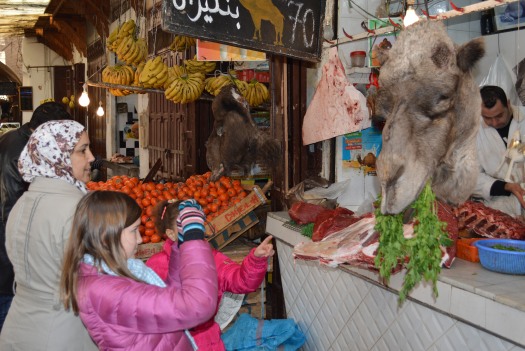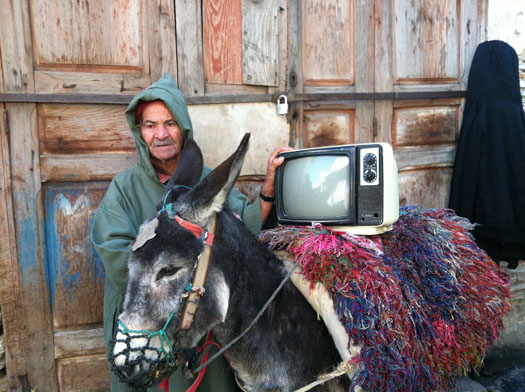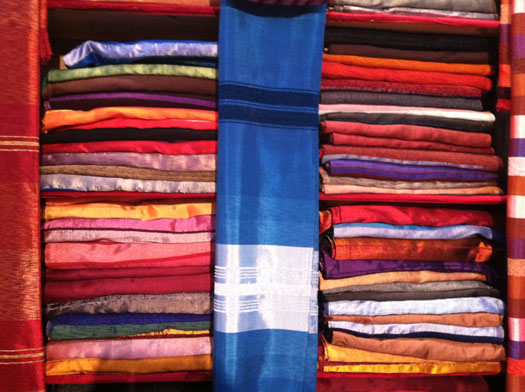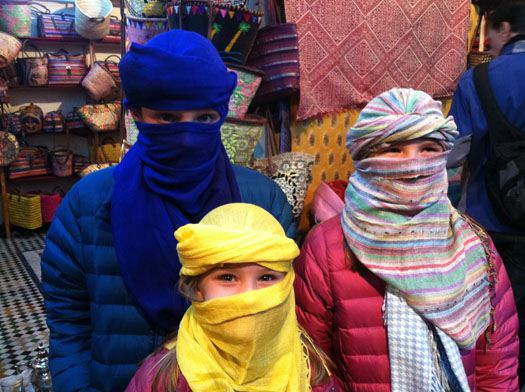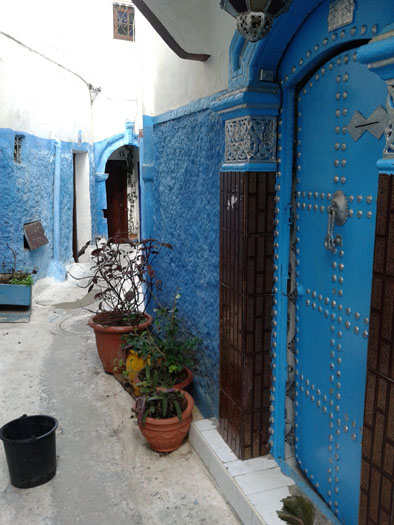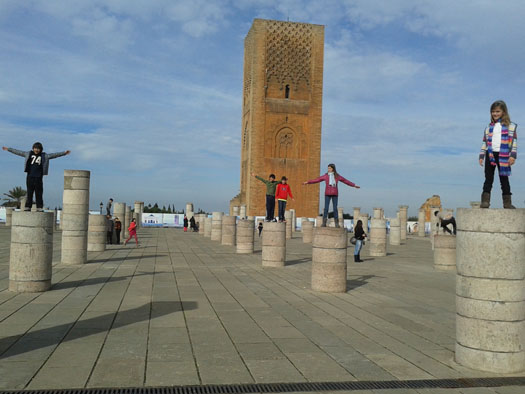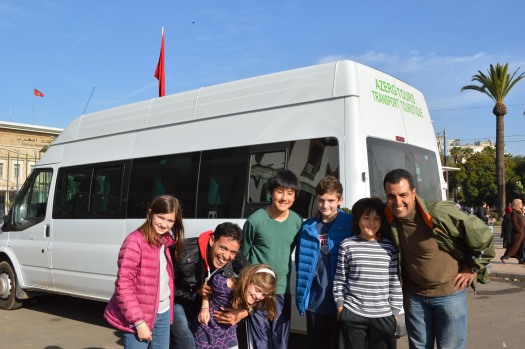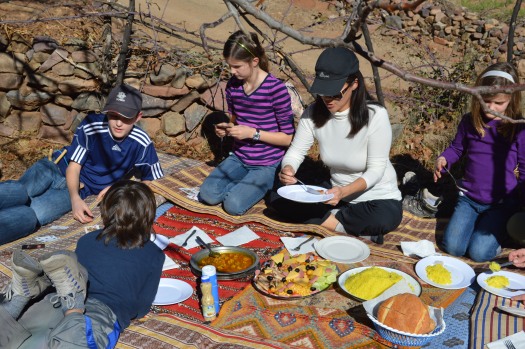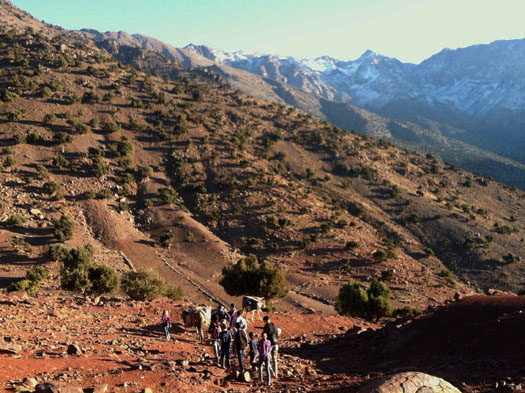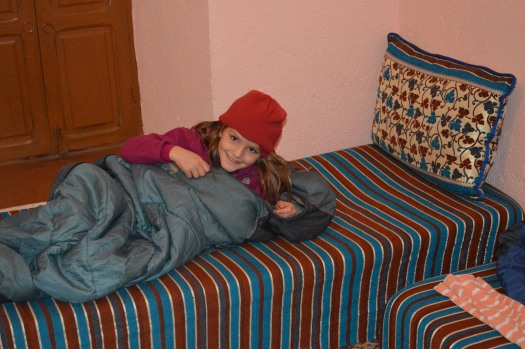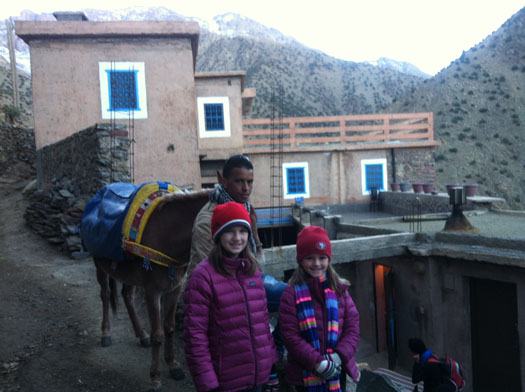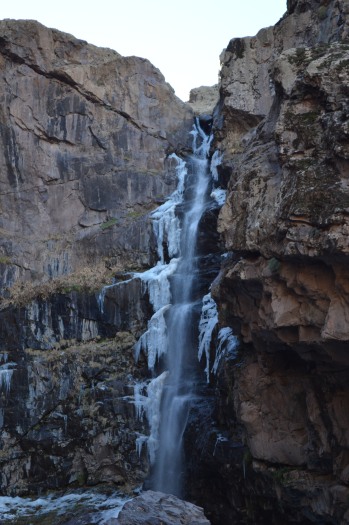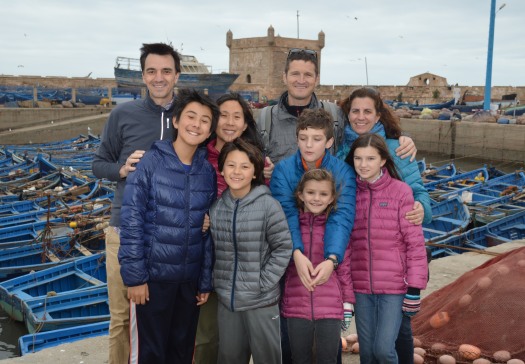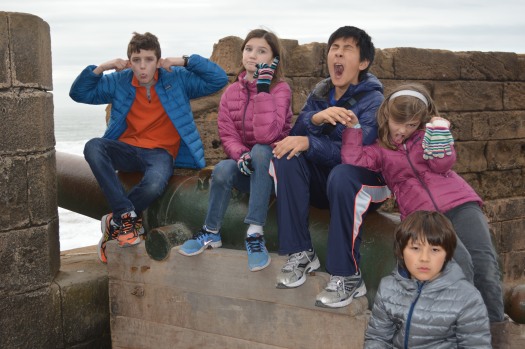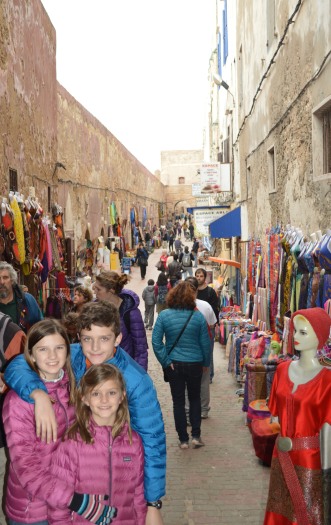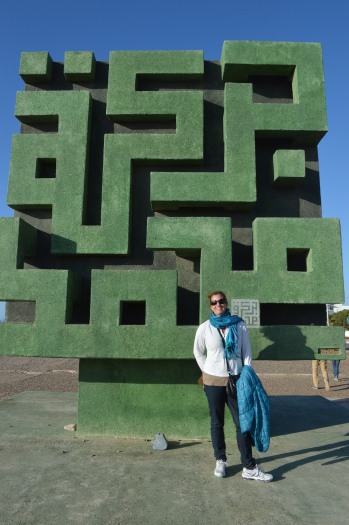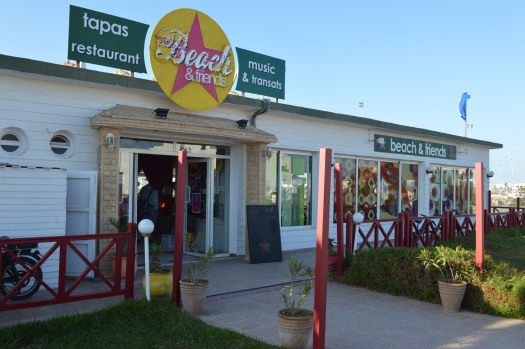This will go on for a few posts so please bear with me. And bear with the endless photos of kids (and adults at times) in puffy jackets; but, you can’t beat the warmth and weight. The Morocco blogs may not be so entertaining, but I really need a record of our North African excursion, which took place December 22, 2013 – January 1, 2014. This first post will focus on Marrakech, and we’ll move on from there.
———-
A one hour and 40 minute direct flight from Barcelona to Casablanca was followed by a 3 hour road trip to Marrakech in a van steered by Mohamed, our driver from Atlas and Sahara Tours. Winding through the Marrakech medina (the old quarter), we soon arrived at our hotel, or near our hotel, as cars cannot fit through the narrow street leading to the front door; here we met our San Francisco next door neighbors, Rob, Lena, Toby, and Miles Frank, an exciting reunion, given our recent life away in Europe.
Let’s kick this off with a hotel or riad recommendation; from the Arabian term for garden, a “riad”, the typical spelling, is a traditional Moroccan house or palace with an interior garden or courtyard. Riyad Al Moussika is first rate, with clean, comfortable, and ornate rooms (check out the sunken tub in the bathroom, not to mention the picturesque courtyard), a fantastic restaurant, and a 10 minute walk to Place Jamaa El Fna, the large square and marketplace in the medina; we are told that our riad was a residence of the former Pasha of Marrakech, Thami El Glaoui, essentially the person put in charge of Marrakech by the French, remaining in this position from 1912 to 1956 while accumulating enormous wealth, apparently taking a cut from just about everyone in town.
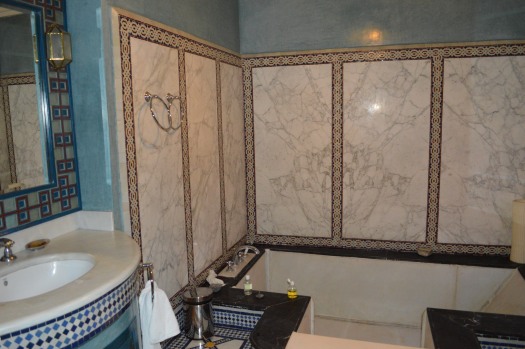
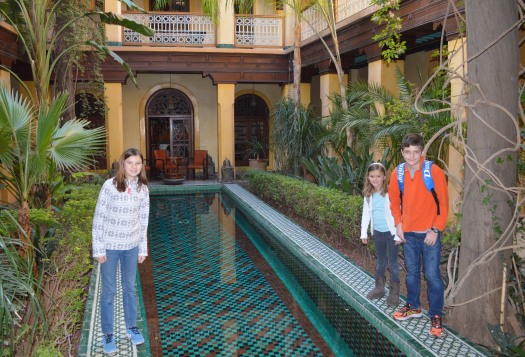
At Pepenero, our riad’s wonderful restaurant, we immediately tasted our first tagines, the customary slow cooked Moroccan stew consisting of meat, poultry or fish and vegetables or fruit. Pepenero specializes in Moroccan and Italian food, and when also considering our later buono Italian dinner, I would have to say that a reservation here is a must for future tourists.
After a 10 minute walk through slender, crowded alleys, avoiding mopeds which seem to have the right of way, we entered the Place Jamaa El Fna, a massive marketplace and entertainment ground, with snake charmers, herb sellers, food venders, musicians and various other performance artists. They all want our money and we probably gave too much to wear the snakes and purchase the spices, although we love and may someday actually use the couscous seasoning and Vicks-like nose clearing vapor crystals.
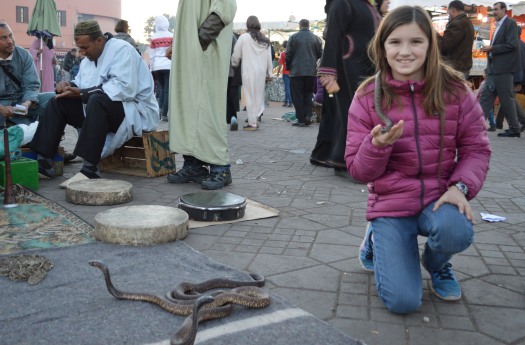
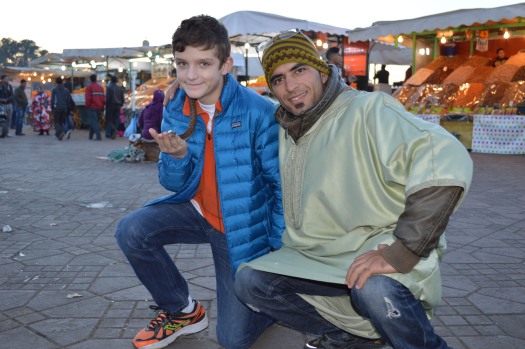
Fishing in Jamaa El Fna; impossible to catch the bottles, but still entertainment.

MEM with Toby and Miles Frank

Here is our spice man, his business passed down by his grandfather and father, certainly happy after our first Moroccan purchases, perhaps made before we had a better understanding of our negotiating power.
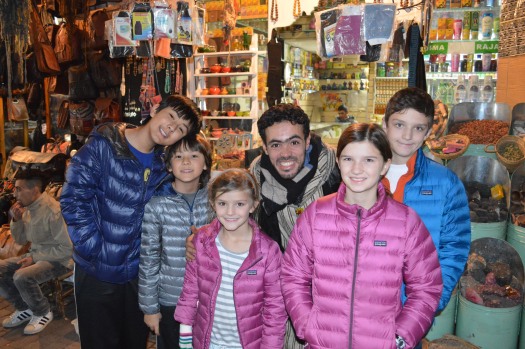
On day 2, Mustapha, our guide for the day, showed us an unmemorable public garden and then Jardin Majorelle, a well maintained garden/tourist attraction, opened to the public in 1947 by its owner/creator Jacques Majorelle, and eventually taken over and restored by Yves Saint Laurent. YSL’s ashes are in the garden; I can’t believe I really care, and the garden really is not particularly interesting in my opinion.
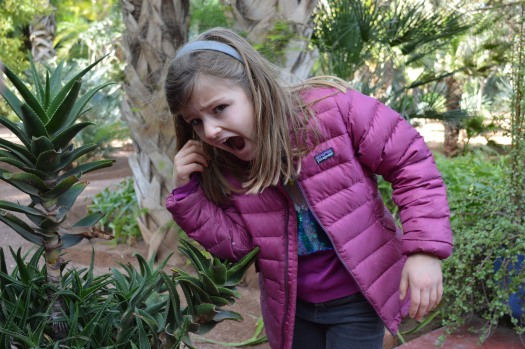
We toured the Saadian Tombs (on the left), beautifully and colorfully decorated, and dating back to the 16th century, although not discovered until 1917. Then the Bahia Palace (on the right), a late 19th century building in the medina, which was maybe worth 30 minutes of time; it seemed not too different from a larger version of our riad, with its courtyard, marble floors, and highly detailed architecture, including this ceiling.

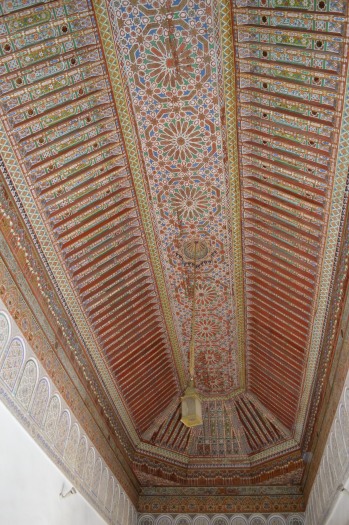
Back in Jamaa El Fna, we haggled for some “magic boxes” from this guy who made them (or displays some blades and sawdust to create the image), rectangular mahogany containers/puzzles where the sides need to be shifted in a certain way so a key falls out and the box can be opened…and broken when you drop it in your hotel room 2 hours after purchasing. Still, obtaining a 40% discount off of the asking price was enough to make us feel good and the merchant feel even better.
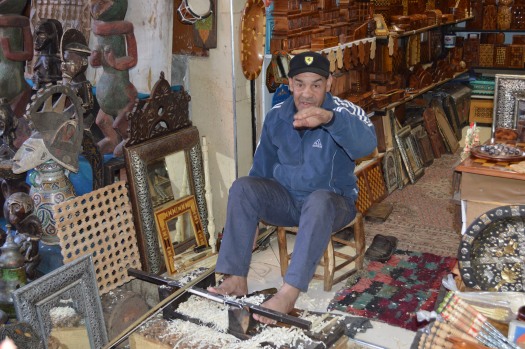
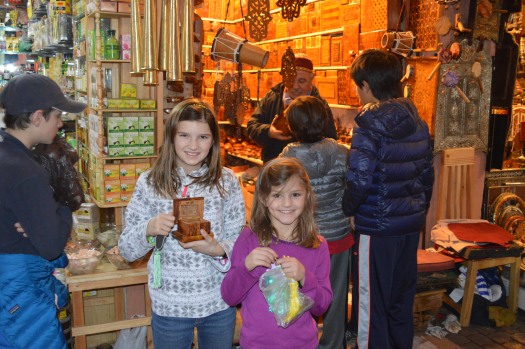
After dragging the kids around all day, we picked a dinner setting specifically for them, Chez Ali, which was a meal and then a horse show with ample gun firing for excitement. While not a recommendation for adults, this was a good call for the family experience. The food was average and the musicians and dancers continuously surrounding our tables were overwhelming in a bit of a loud and obnoxious way, but the children enjoyed the show.
Yes, we really want the kids to experience Marrakech and Morocco, so what did we do the next morning? The four of us adults went out for a couple of hours in the souks with our shopping guide, Abdelhaq (“Abdel”), who with his wife has a business of offering private tours/experiences to visitors (Morocco Private Experience), and left the young ones at the hotel. Don’t get me wrong, they were ecstatic to have the extra time for cards and video games. And we were all smiles, but with diminished dirhams, after acquiring a new tablecloth/napkins and two beautiful bright orange leather pouffes. Will the ostentatious pouffes work in our house? We’ll find out in about 6 months. I am guessing that our shopping guide, Abdel, may have profited the most on this day, both from our fee and the under the table cuts he likely collected from the merchants.
This is one of the Tazi brothers (Rob Frank on the right), who run L’Ourika, known for clothing, but also a provider of likely overpriced but very attractive tablecloths; I hope our dinner guests will agree.

…and the creator of our pouffes, outside of his shop. Our two are similar to the orange one on the left.
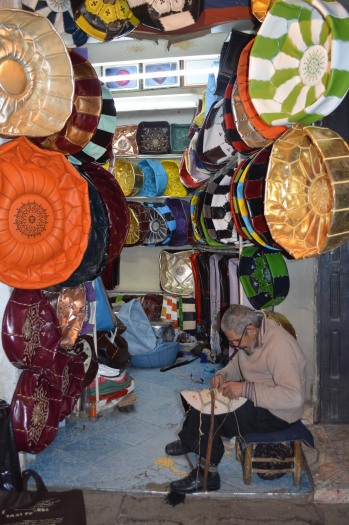
Sometimes you need to pay to take a photo in the souks but this man, with his colorful offerings, was nice enough to allow it gratis.
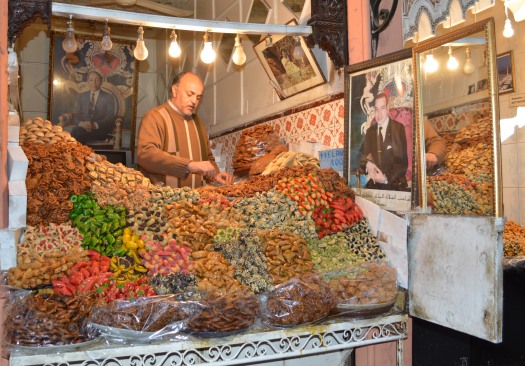
Having retrieved the youth, we were then escorted by Abdel to cooking school. He had said he could do anything for us, and we asked for him to find a cooking class for our two families. After following Abdel’s car, our van driver came to a stop in a residential area of Marrakech well outside the medina, and Abdel opened the van door and said “welcome to my home.” Expecting an actual cooking school, we were surprised to walk into his house of course, but enjoyed learning from his own family’s cook/nanny as she prepared lamb and chicken in the Moroccan tradition along with what were truly my preferences: eggplant, and zucchini salads and ratatouille. We dined with Abdel and his wife, Khadija, and were actually more involved with setting and clearing the table than creating the meal; it was a cooking lecture rather than a participatory experience, which was fine as the kids played cards in their yard.


Post-meal, Abdel escorted us to his friend Larbi Cherkaoui’s art studio, where we saw interesting painting/calligraphy on sheepskin, but held back from making any purchases; beautiful work but not cheap. He then left us at the famous Mamounia Hotel, Churchill’s home away from home in Marrakech. This had been our first choice for accommodations after high ratings from my parents and cousin, but high prices were also the case during this holiday period. So, we enjoyed a Christmas Eve drink there instead and briefly walked the fabulous grounds.
Back at our own resting place, Riyad Al Moussika, we were spent, and decided to be lazy and eat at the riad. But it wasn’t so easy. While we knew of the quality of Pepenero from our initial lunch, we hadn’t quite understood the restaurant’s popularity. Glancing at Trip Advisor and seeing the ranking at 3 of 496 Marrakech dining options, we quickly realized why we were told there was absolutely no room for us. Still, we asked if they could serve us in the small living room adjoining one of our bedrooms, and they agreed to the offer, while having to haul our meals up a stairway. With live Moroccan music flowing in from the courtyard below (drums, strings, a little singing), we enjoyed a cozy Christmas Eve dinner of very tasty pasta, needed after a few days of pure couscous and tagines, good Moroccan wine (despite an obviously small wine audience in this country), and chocolate molten cake, dark and delicious, the chocolate flood released upon fork insertion. We ended the night with a game of Avalon, a fun recurring theme on this trip as the Franks are avid game players, and a view of the belly dancing performance from our perch above the restaurant. A perfect Christmas Eve.


Tags: Atlas and Sahara, Bahia Palace, Chez Ali, couscous, Jardin Majorelle, L'Ourika, Larbi Cherkaoui, Marrakech, medina, Morocco, Morocco Private Experience, pasha, Pepenero, Place Jamaa El Fna, Riyad Al Moussika, snake, tagine, Thami EL Glaoui, Yves Saint Laurent

